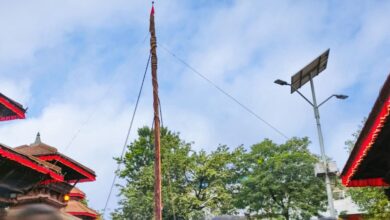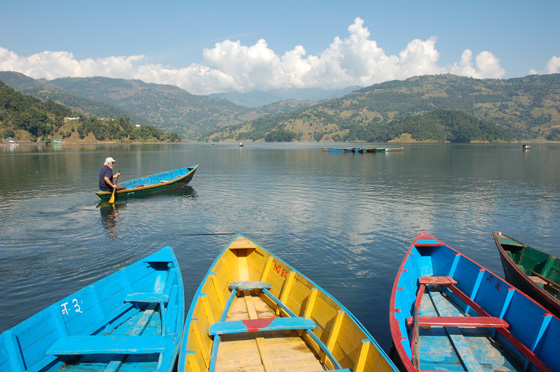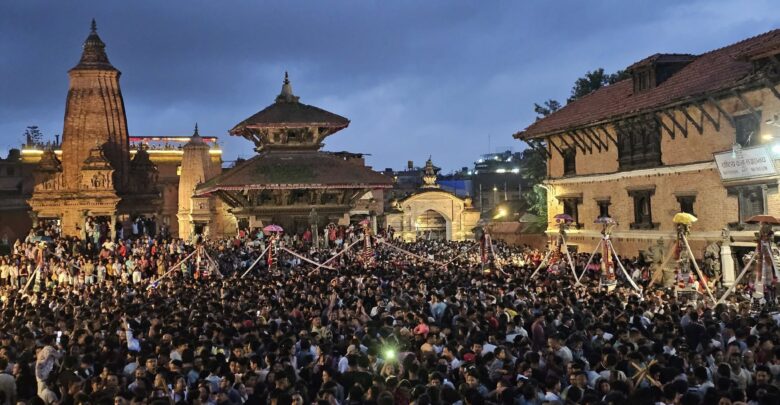
Today is 10th of August 2025, the first day of the dark fortnight (waning moon) of the lunar month of Bhadra (which falls around August/September every year) and the Newar community, especially in Kathmandu, Patan and Bhaktapur is celebrating one of the very unique and emotionally rich festivals in Nepal, Gai Jatra.
Fact: One lunar month is the time required by the moon to complete one revolution around the earth. The length of a lunar month is 29 days, 12 hours and 44 minutes (approximately 29.5 days).
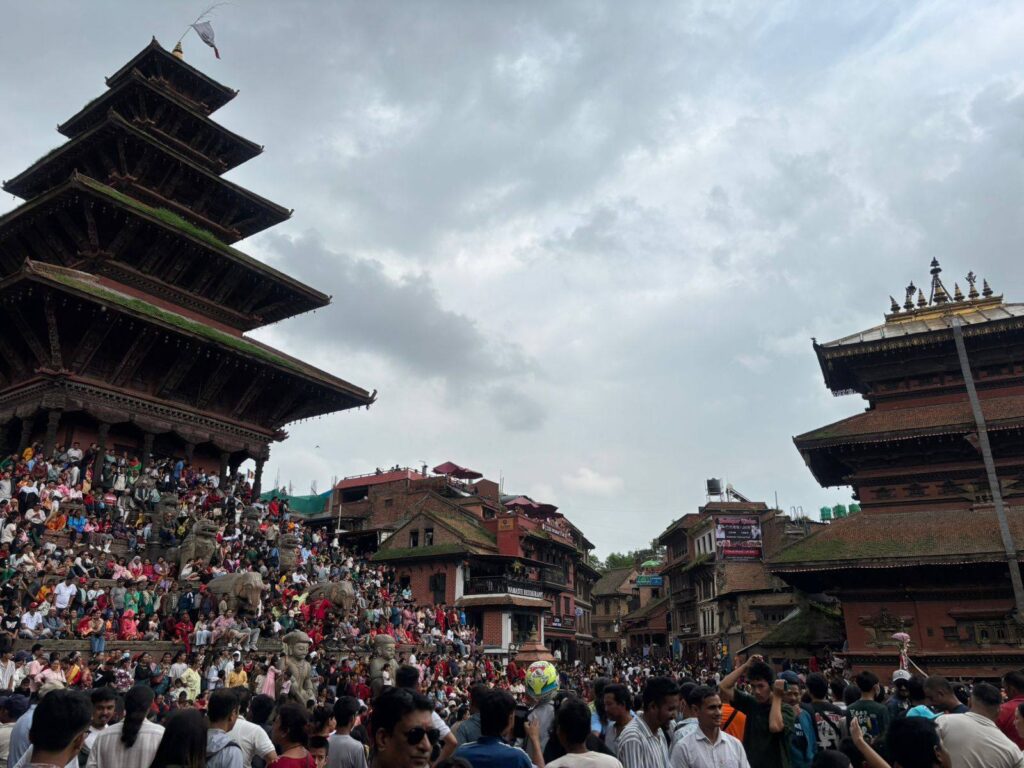
‘Gai’ means Cow, and ‘Jatra’ – derived from the Sanskrit word Yatra- refers to a journey, procession or pilgrimage. Gai Jatra, therefore, is a festival centered around the cow, believed to guide departed souls to the afterlife. The celebration features religious processions, young boys dressed as cows, traditional music and dance and satirical street performances. Bringing mourning and mirth together, it serves both as a tribute to those who passed away in the past year and as a communal space for the living to process grief – blending remembrance with humor, support and shared cultural expression.
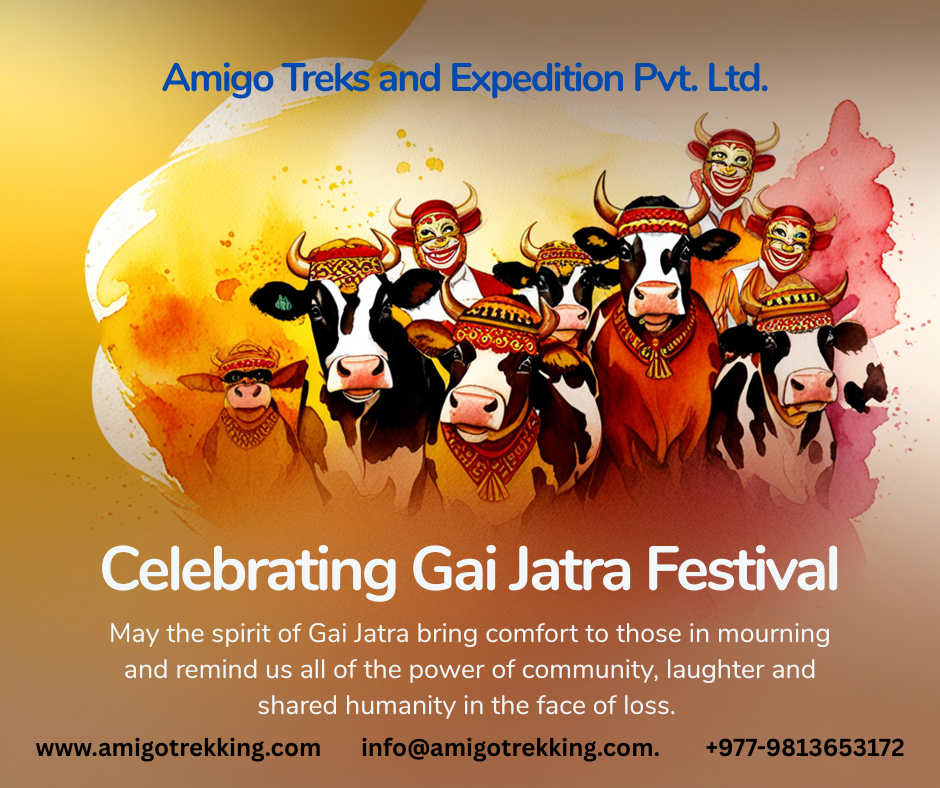
Why Is the Cow Chosen Over Other Animals?
In Hinduism, the cow is a sacred and revered animal, symbolizing life, purity, motherhood and non-violence (ahimsa). It is considered a giver of nourishment, as it provides milk and other useful products used in daily life and religious rituals. This animal is also closely associated with Lord Krishna, who loved and protected cows and with the divine cow, Kamadhenu, believed to grant all wishes.
But the most important of all is the cow’s spiritual connection to Yama, the Hindu god of death. To understand this connection, we first need to understand the key beliefs about the afterlife…
In Hinduism, death is not seen as the end of life, but a transition of the soul (Atma) from one body to another in a continuous cycle called Samsara – the cycle of birth, death and rebirth. The soul (Atma in Nepali) is immortal and distinct from the physical body, and when the body dies, the soul departs and continues its journey towards Yamalok, the realm of Yama- the god of death and justice. There, the soul meets Yama, who evaluates its karma and determines whether it will be reborn, sent to enjoy rewards in Swarga (heaven), face punishment in Narkha (hell), or attain Moksha- liberation from the cycle of birth, death and rebirth. But to reach Yamalok, the soul has to travel through a symbolic or metaphysical path that may be filled with obstacles. For those who have lived a righteous life, the journey is peaceful and smooth; however, for those who have not, their soul has to face fear and suffering.
But, the cow being a sacred and pure animal, holds power to intercede in the journey of the soul after death and lead (easing the soul’s passage and protecting it from obstacles) the souls of the deceased safely to Yamaloka.
Therefore, cow is chosen over other animals.
Who celebrates Gai Jatra and how is it celebrated in Kathmandu?
Gai Jatra is observed by families who have lost a loved one in the past year. This festival in Nepal is mainly celebrated by people belonging to the Newar community in Kathmandu, Bhaktapur and Lalitpur .
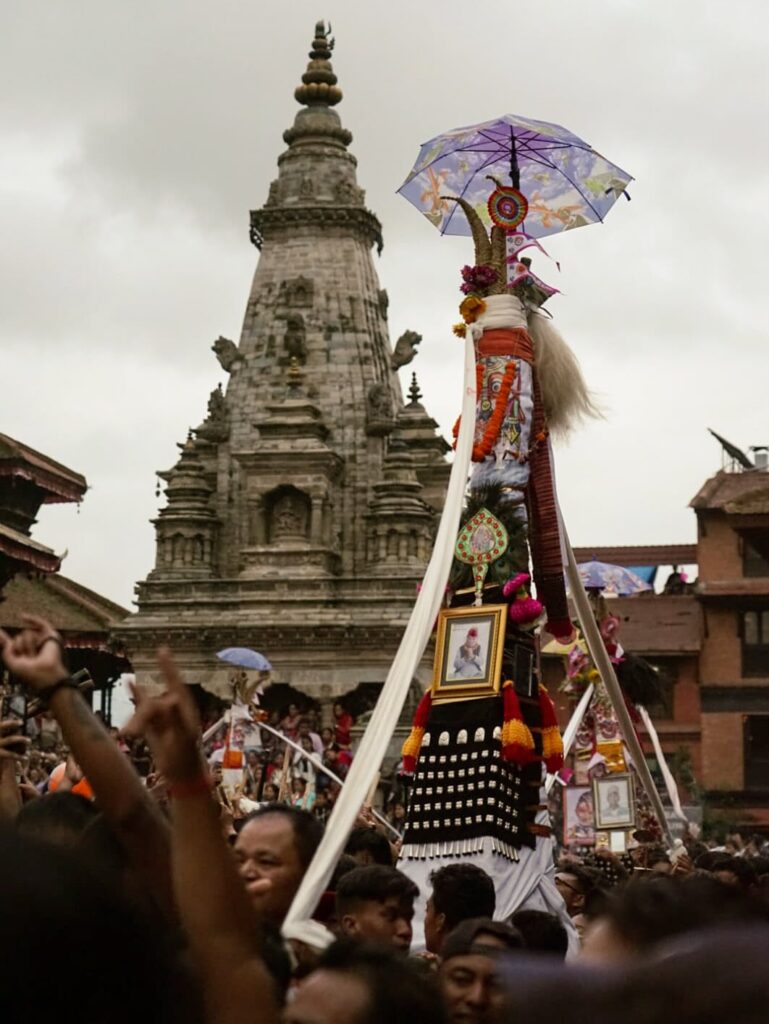
To celebrate the festival, families lead a cow in a public procession, or if a cow is unavailable, a young boy dressed as a cow, as the cow is believed to guide the soul to Yamalok, the kingdom of the god of death, Yama. The festival includes colorful parades, dancing and people dressed in humorous or satirical costumes, a tradition started by King Pratap Malla to cheer up his mourning queen who had lost her son. Humor, satire and street performances are used to lighten sorrow and bring the community together. Alongside the fun, families perform rituals and offer prayers for the departed souls. Bhaktapur is especially known for its extended vibrant week-long celebrations. Thus, beautifully blending remembrance with joy, Gai Jatra turns grief into a collective healing.
How is Gai Jatra different from other Jatras and festivals in Nepal and around the world?
Gai Jatra is different from other Jatras and festivals around the world because it uniquely blends mourning with humor, allowing families who have lost loved ones to honor the deceased through joyful processions, satire and public performances. Unlike most death-related festivals that are solemn, Gai Jatra uses laughter as a way to heal grief.
Unlike other prehistoric festivals that are celebrated primarily for seasonal changes or agricultural cycles, this has a unique focus on honoring the dead and is also relatively new, as its root traces back to the 17th century during the reign of King Pratap Malla of the Malla dynasty in the Kathmandu Valley of Nepal.
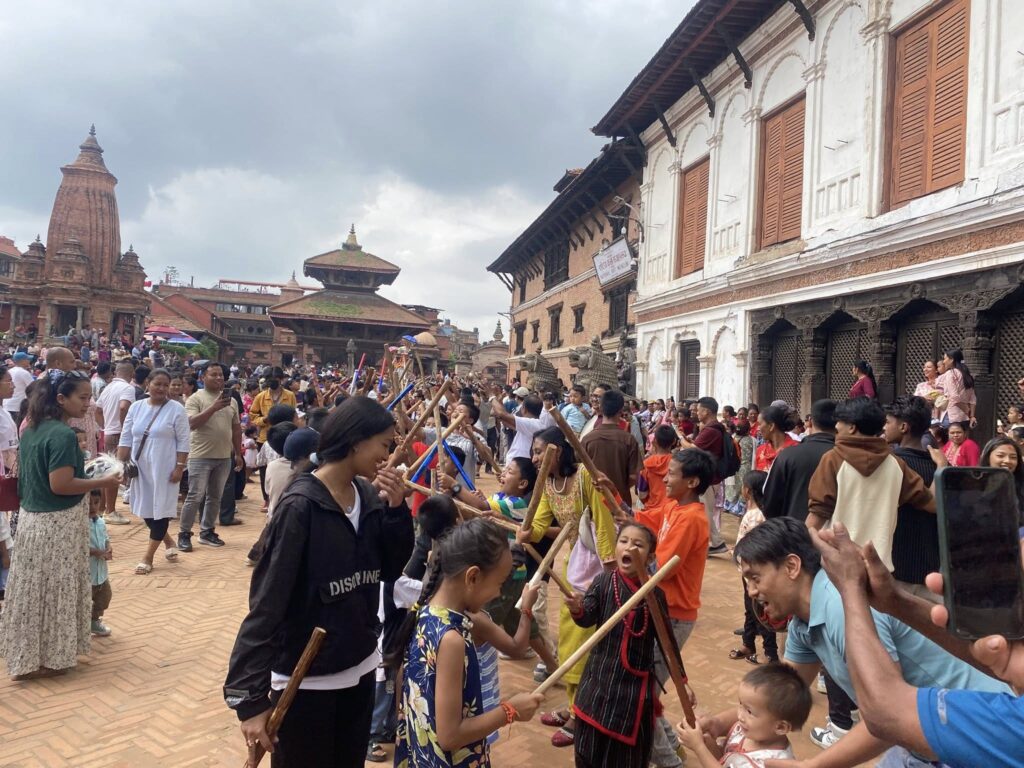
The root of Gai Jatra explained…
After the death of his young son, the queen (wife of King Pratap Malla) was overwhelmed with grief. To console her, the king organized a procession of people who had lost loved ones, hoping that seeing shared sorrow would ease her pain. This public display of mourning eventually evolved into Gai Jatra, where families honored the deceased by leading a cow- considered a sacred and spiritual guide- or a child dressed as one. Over time, the king also introduced humor and satire into the event, encouraging people to perform skits, jokes and mimicry to lighten the atmosphere and comfort the grieving. Thus, Gai Jatra was born as a festival of remembrance, healing and collective expression deeply rooted in Newar tradition and royal history.
The festival features cows or children dressed as cows, believed to guide souls to Yamalok, the realm of the god of death.
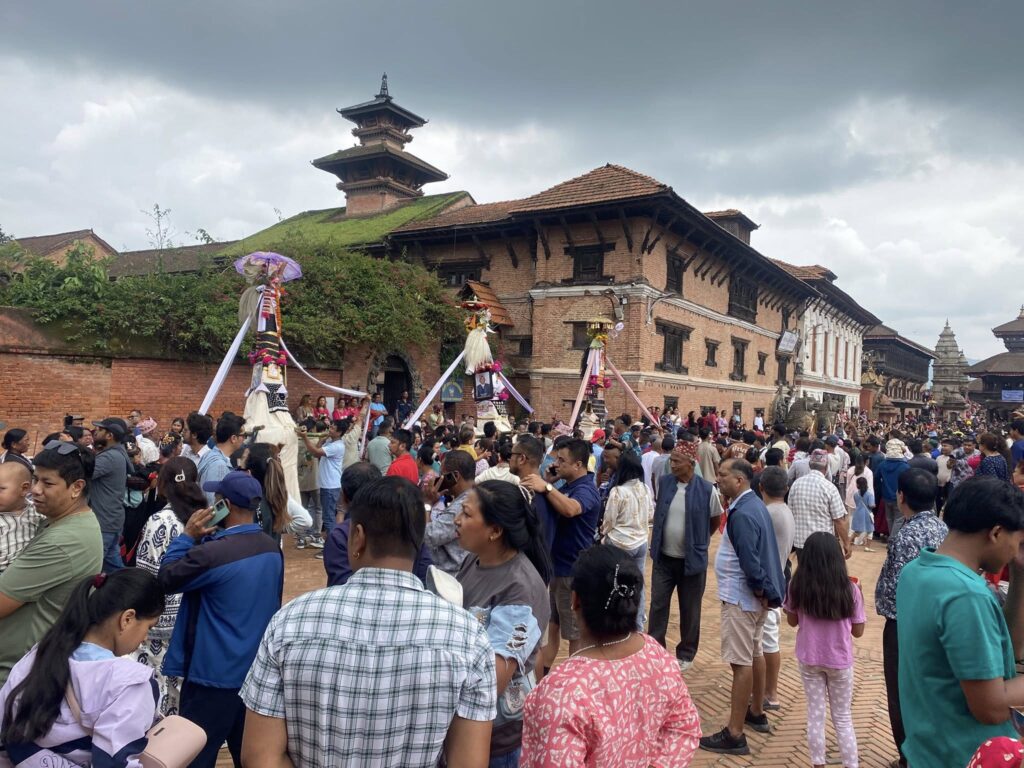
Additionally, it also encourages open satire, where participants freely mock political and social issues, making it a rare mix of spiritual ritual, cultural expression and social commentary, found in few other festivals worldwide.
Are there any other festivals similar to Gai Jatra in the world?
Yes, festivals like Mexico’s Dia de los Muertos (Day of the Dead), China’s Qingming Festival (Tomb-sweeping day), Korea’s Chuseok, Japan’s Obon Festival, the Philippines’ Undas (All Saints’ Day/All Soul’s Day), Bolivia’s Dia de las Natitas, the United States’ Memorial Day, as well as Brazil’s Finados (All Souls’ Day), all honor and remember the deceased like Gai Jatra in Nepal. However, this festival in Nepal stands out for its distinctive blend of satire, humor and public performances that allow people to express grief, question, social norms and unite the community through both mourning and laughter.
This festival is followed by another big festival in Nepal, Krishna Janmastami. In 2025, Krishna Janmastami will be celebrated on 16th of August.



